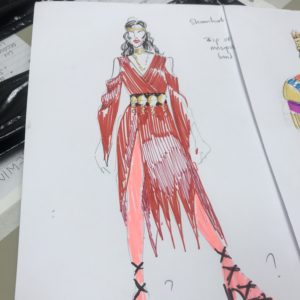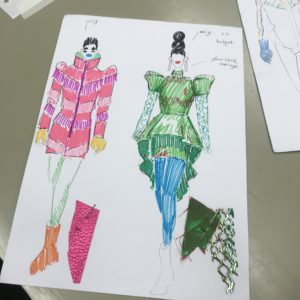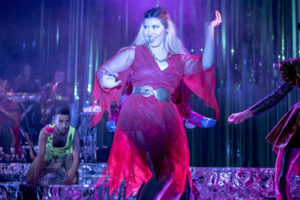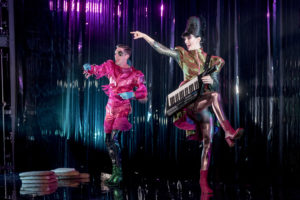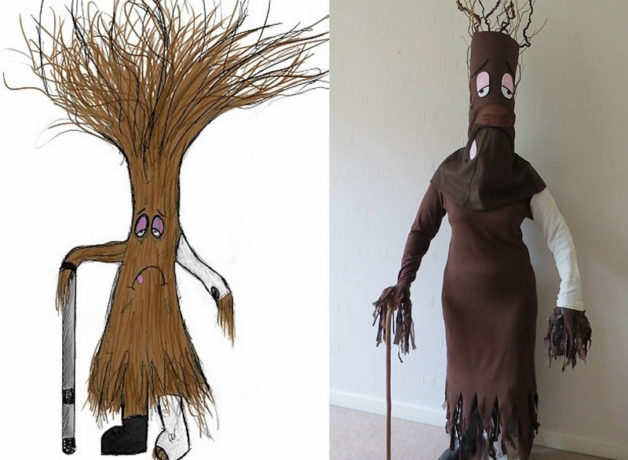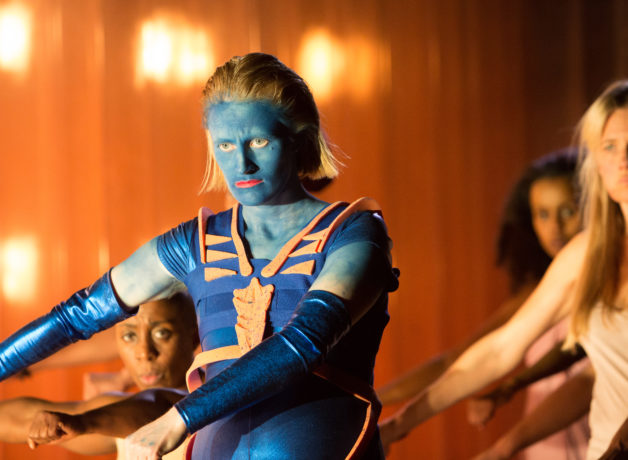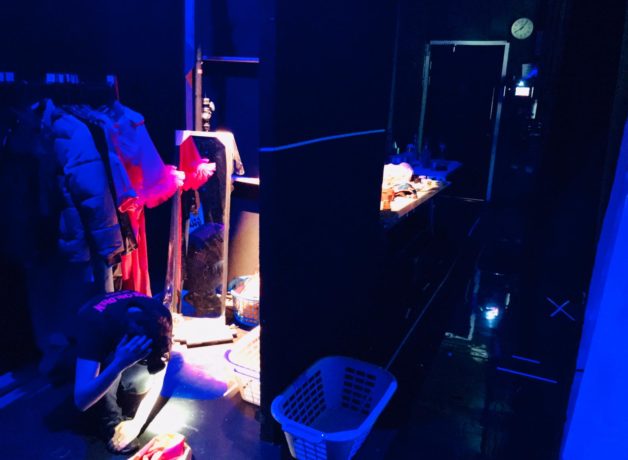On World Theatre Day we’d like to share the knowledge and expertise of some of the team here at HOME. Nikki Wragg is HOME’s Wardrobe Technician and she has kindly shared some of her experience, portfolio and advice in starting out as a costumier or theatre costume designer.
Hello Nikki, when did you first realise you wanted to pursue a career in the costume design/theatre industry?
When I lived in Edinburgh, I volunteered with Savoy Opera Group. My first task for them was making seaweed for the musical, Honk!. In 2007, the society asked me to be wardrobe mistress for their Festival Fringe production. After that ended, I realised how much I’d enjoyed creating and collaborating and wanted to make costuming into my career.
Did you study fashion or costume design at college/university?
Yes, I studied for an HND in Theatrical Costume Interpretation at a college in Edinburgh. The course was mostly geared towards my main area of interest – making and modifying costumes.
Who or what are your biggest inspirations?
In the past, I’ve admired work by designers Colleen Atwood (Into the Woods) and Janet Patterson (Bright Star). In some ways it’s very easy to make things look spectacular; what’s harder is finding the right pitch when it comes to everyday attire. Two designers I’ve worked with at HOME, Christina Cunningham (Pacifist’s Guide to the War on Cancer; People, Places & Things) and Rhys Jarman (Future Bodies; The Wedding) both have a really nuanced eye and an interesting approach to design and colour palette.
Walk us through how you design or construct costumes and tell us about your favourite piece…
Costume construction begins with a discussion between the designer and supervisor. If the production requires period attire, we might look to historical patterns by the likes of Jean Hunisett, Janet Arnold or R.L. Davies. If it’s more modern, we’re likely to draft new patterns or adapt existing ones. Often a designer and supervisor go fabric shopping together to ensure fabrics are the right weight, colour and drape for what’s needed. Cast measurements are taken so patterns can be cut to an appropriate size. Once garments start to come together, either a toile (a mock-up) or the garment itself in progress, we schedule costume fittings with the actors to check for fit and function.
Initial designs for Insane Animals and the final looks
One of my most favourite costumes to have worked on was Trevor the Tree. I was commissioned to make him for an environmental campaign in 2014.
What has been your most ambitious project?
Some of HOME’s commissioned work in Theatre 2 has been rather big in scope. Usually it’s when trying to costume a cast for multiple scenes in multiple outfits on a small budget.
Future Bodies
Who have been your biggest mentors in this industry and what is the best advice they have ever given you?
Before I joined HOME, I freelanced at the Royal Exchange Theatre. I’ve been very fortunate since to have had Nikki Meredith, their Head of Wardrobe and Jennifer Adgey, Costume Cutter, on hand to assist me when needed with their combined knowledge and expertise. Best advice? Probably not being afraid to ask in the first place!
What has been your biggest challenge?
Every production brings its own set of unique challenges. My most recent challenge was working out how to make the rip-away shirt and trousers for our production of Insane Animals. Thankfully with a bit of engineering and some super work by the actors and choreographer, they incorporated the quick-change reveal seamlessly into the dance routine!
What has been the proudest moment in your career thus far?
I’m always especially proud of my cast and colleagues on opening night as it’s usually been such a journey to get there. The other two moments would be when I was offered a costume internship with Virginia Repertory Theatre (Season 2012-13) and being offered the role here at HOME. Manchester is such a vibrant, buzzing city for culture; it’s a pleasure to be part of the theatre industry here.
What advice would you give to someone just starting out in their career and hoping to make it as a costumier OR in theatre costume?
Before starting at HOME, I’d worked for six different theatre organisations across the UK and overseas in several different wardrobe-related roles. The majority of these were short term, lasting from three weeks to several months. You may not land your perfect costuming job right away but every job you take will help you to grow in experience and knowledge.
There are multiple costume changes in a theatre performance, what have you found to be the best way to help cast members in wearing costumes?
A good quick change should be well-choreographed, so it happens in the exact same order every time. Being ready for an actor’s exit, staying calm when something doesn’t quite work out or takes a little longer and having a sense of humour all helps.
Myself in the Quick Change area backstage, waiting for Emer (Shamhat) to exit during Insane Animals. Photo courtesy of Jamie Byron
We have been overwhelmed by the love and support we’ve received since announcing our temporary closure due to the coronavirus update. This is a difficult time, and we appreciate everyone who has asked how they can help. If you are receiving a refund due to cancellation of a show, please consider being one of the many people who have turned this refund into a donation, if you can afford to do so. And please do add Gift Aid if you can – this means we can claim 25% more, without any additional cost to you. If you would like to make a one-off donation, you can do so via our Response Fund here: https://homemcr.org/about/support/donations/

